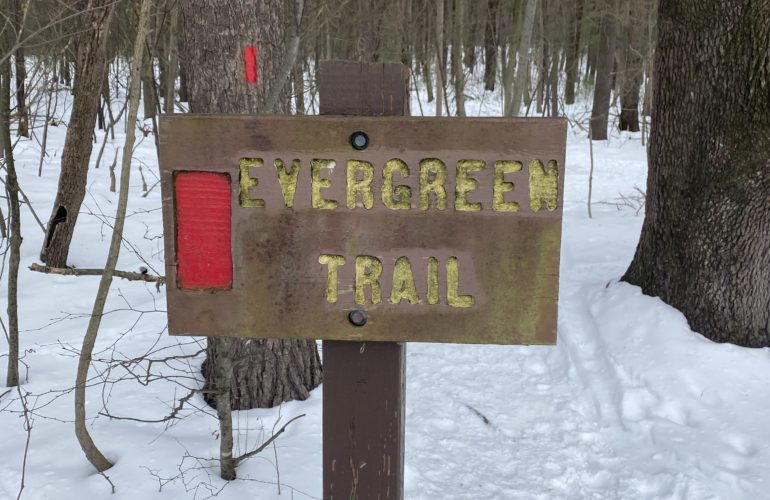
One of the most daunting aspects of going for a hike or run for the first time in a Pennsylvania State Park or Forest is making sure you stay on the trail.
During my 121 In 21 Challenge, I ran a mile in all 121 Pennsylvania State Parks in 224 days. With many of my runs occurring on trails, I quickly had to learn what trail markings meant and then use them to my advantage to stay safely on the trail.
Luckily, these trail markers are easy to follow once you learn what they mean.
What are trail blazes?
Trail blazes often appear as colored paint strokes on trees. Blazes are used to reassure hikers that they are following a verified, marked trail. Blazes direct travel by their arrangement.
Often, the trail blaze colors are indicated on DCNR recreational guide maps. Be sure to visit the DCNR State Parks website to know what color blazes are used for the trail you plan to hike. Park offices and information kiosks also often indicate the color of trail blazes.

What directions do trail blazes indicate?
Pennsylvania parks and forests use a simple system to indicate travel. The above graphic demonstrates what the trail blaze arrangement means for travelers.
A single blaze indicates a straight path. An offset of two blazes indicates left or right turns — with the top blaze indicating which way to turn. Two stacked blazes indicate caution.
This system allows hikers and trail runners to easily know what to do on the trails.
What should I do if I’m lost?
If you do lose your way, DCNR recommends that you remember the acronym S.T.O.P.
Stop: When you realize that you’re lost, stop immediately. If you have a whistle, use it to draw attention to your location.
Think: Remain calm and think about your situation, your location and how you got there. Using some time to think may help you retrace steps and link back up with the trail.
Observe: Identify what you have with you that could be useful. Also, take a look around the area to determine where the trail is and if you’re safe.
Plan: If you have a plan set in place with those you were hiking with, follow through with it if you can.
Now that you know more about the trail blazes and what to do if you become lost, set aside some time for an easy, short hike in your area. I personally recommend a well-marked trail with few elevation changes under 5 miles. That way, you can gain confidence in the woods before delving too deep. Have fun!

Christian Alexandersen ran one mile at each of Pennsylvania’s 121 state parks in 2021 and has been sharing with us stories and tips from his journey. To more blog posts from Christian and other PPFF guest bloggers, visit our News page. Stay tuned for more!
Subscribe to our weekly e-blast to stay up to date on News, Events, and Blog posts!




